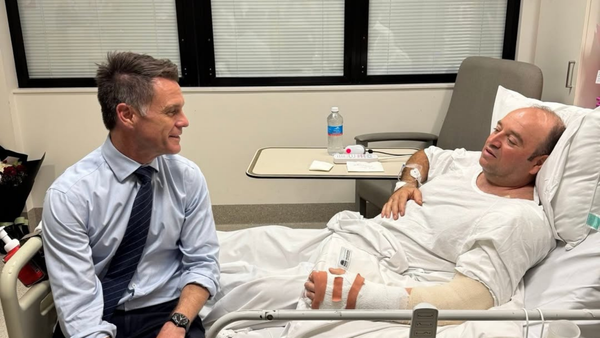
The news that Labour have decided not to proceed with the previous Conservative Government’s “Plan For Drivers” should be welcomed, but should also hardly be a surprise.
In 2023 Rishi Sunak’s government launched a plan to limit the number of new Low Traffic Neighbourhoods, bus lanes and 20mph zones; it was political posturing, which ironically made my job of delivering active travel schemes for the then Conservative Mayor of the West Midlands Andy Street slower and more expensive.
It is perplexing to me that the same commentators who want less government involvement and a smaller state also want civil servants in Whitehall to decide whether a few bollards can be placed in Birmingham. We already have one of the most centralized Government systems of any democratic state, so it is pleasingly pragmatic that Labour have resisted the temptation to control even more from Westminster. After all, local politicians, are held to account through elections. If you don’t like them after LTN schemes have bedded in, you can vote them out. It’s a good system.
Labour’s decision is also good news if you don’t want so many people to be killed or seriously injured on our roads. In July, we heard that London’s low-traffic zones have cut deaths and injuries by more than a third. This should be heralded as a huge success. Those who followed the data and made them happen, in the face of noisy opposition, have literally saved lives.
This gradual change in the hierarchy of streets from places for people to places for machines has, regrettably, slowly sucked the life out of many of our communities. And in far too many cases, it’s made them places of danger, with large numbers of people killed or suffering life-changing injuries in road traffic collisions.
In my former role as West Midlands Cycling & Walking Commissioner, I met bereaved families who could not understand why society largely shrugged their shoulders when their loved ones were killed on our streets. I wanted to do everything I could to make our streets safer but the status quo of the road danger we’ve become accustomed to was stubborn and difficult to shift.
The status quo has obvious consequences from the people killed or seriously injured on our streets, but it has other, more subtle, consequences too. It stops kids from being able to walk to school independently, it hinders those who need extra time to cross the street, the noise from vehicles stresses us out, and, amongst many other disadvantages, it prevents kids from being kids and playing in the street.
It is not really a surprise that lower speeds and less traffic on streets that were not designed to carry large volumes of cars result in safer neighbourhoods. Which is why, whenever possible, I helped secure funding to deliver Low Traffic Neighbourhoods and schemes to reduce private car speed and dominance. My only regret is not doing more.
Delivery by local authorities has been challenging, which is why I applaud those like Cllr Clyde Loakes in Waltham Forest who has delivered an ambitious programme of low traffic neighbourhoods, while maintaining success in subsequent local elections.
Local councils are trying to keep up with increased pressure on their local road networks; exacerbated by national policy decisions which keep vehicle mileage increasing, despite stubbornly high carbon emissions from transport. By any stretch of the imagination, these are not what our residential streets were designed for.
Low Traffic Neighbourhoods have been blamed for everything from traffic jams to gentrification to undermining British values. But yet again, this data (on top of a mountain of existing evidence) shows they work.
What’s harder to measure quantitatively is how much nicer life is in an LTN. But thankfully we have qualitative data for that. Take former PM Rishi Sunak’s LTN review (also launched as part of their Plan For Drivers): it was designed to highlight the policy as a failure so it could be axed, but it actually revealed low traffic neighbourhoods work and are popular. Specifically surveys of nearly 2,000 residents in four sample schemes, in London, Birmingham, Wigan and York, found an average of 45% support and 21% opposition.
And yet, you’ll still find people in the comments section, probably beneath this very article, insisting it’s all a con. That LTNs are a plot to punish drivers and increase traffic elsewhere. In fact, this study showed no adverse effect on people killed or seriously injured on boundary roads, and a separate study in 2023 showed that LTNs appeared not to push traffic onto boundary roads. That any report showing positive outcomes must be propaganda. That the authors of the paper ride bicycles. But ask them for their peer-reviewed evidence and you’re met with silence. Which is strange, if it’s all supposedly so easy to manipulate the data and publish a study to suit a particular narrative.
We should be honest about what’s happening. A small but very vocal group has built an entire identity around opposing these changes. They even managed to make it policy of the former Government, even if they then failed to make it an election issue. They were wrong about the impacts, but they keep doubling down, even as more and more people, quietly and with far less fuss, enjoy safer streets, more transport choices and more pleasant neighbourhoods.
The data speaks for itself, and when it comes to reducing the number of people killed or seriously injured on our streets by a third, there isn’t a more important metric of success. A real Plan For Drivers would support these measures to reduce road deaths and use more LTNs to deliver genuine transport choices, freeing up the roads for those who really need to drive.
Adam Tranter was formerly West Midlands Cycling and Walking Commissioner under Mayor Andy Street. He is the co-host of the Streets Ahead podcast.







